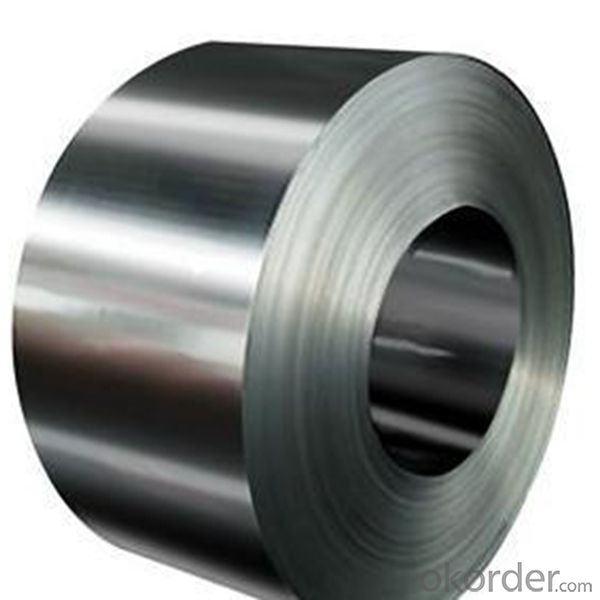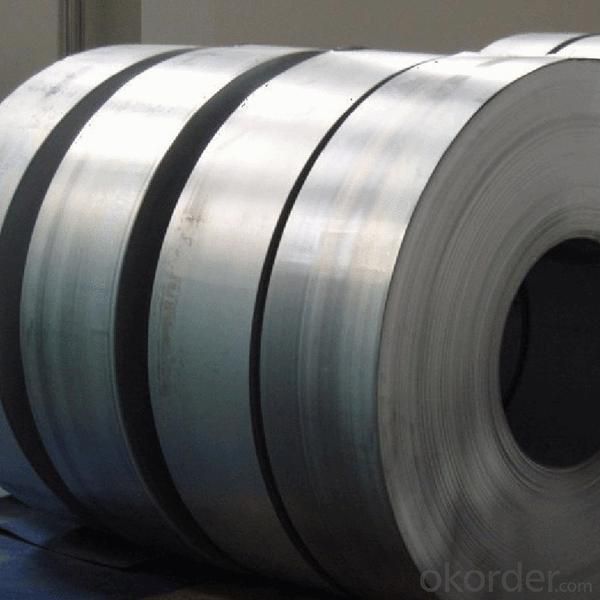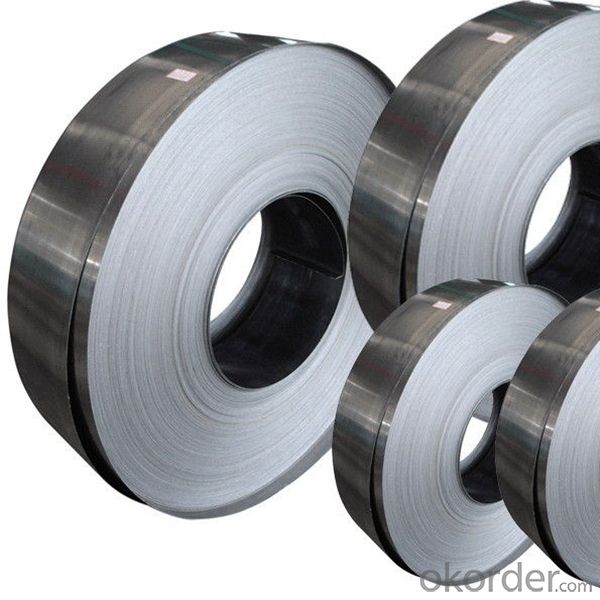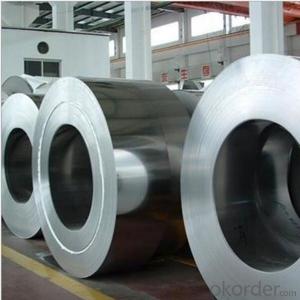Steel Coils in Hot Rolled from China,Steel Coils Grade 304,Steel Coils No.1 Finish
- Loading Port:
- China main port
- Payment Terms:
- TT OR LC
- Min Order Qty:
- 18 m.t.
- Supply Capability:
- 10000 m.t./month
OKorder Service Pledge
OKorder Financial Service
You Might Also Like
Item specifice
Steel Coils in Hot Rolled from China,Steel Coils Grade 304,Steel Coils No.1 Finish
Products Description
Product | stainless steel coils/plates/sheets | ||
Discharge Port | Any Port, China | ||
Size | Coils | Cold Rolled: | Thickness0.3-8mm,Width:280-2100mm |
Hot Rolled : | Thickness3-14mm,Width:650-2100mm | ||
Plates | Thickness2-80mm,Width:1500-3000mm | ||
Coil Weight | About 20 Tons | ||
Grade | 201,202,304/304L/304H,316/316L/316H,321/H,310S,409/L,430 etc. | ||
Technique | Hot Rolled/Cold Rolled | ||
Finish | 2B, BA, 2D, No1, No2, No4,NO.8,SB etc | ||
Edge | Mill Edge / Slitting Edge | ||
Package | In bundles, or as customer's requirement | ||
Place of Origin | Made in China | ||
MOQ | 20 Tons | ||
Packaging & Delivery
Packaging Detail Standard export packing or following customer's demand
Delivery Time: Within 15-20 days after deposit or according to the order quantity
Picture of Products:


Application
Boiler heat exchanger, machinery andpetroleum ,chemical industries, hardware fields,Food industry,construction material,kitchen utensils, building construction, medical equipment,chemical tank, pipe etc


FAQ
Q: How long is the delivery time?
A: Normally 30-40 days, but mostly according to the specific requirements or the quantity
Q: Could you send me sample?
A: We can supply you with the sample for free, but the delivery charges will be covered by customers.
- Q:How do you prevent intergranular corrosion on stainless steel sheets?
- Intergranular corrosion, which causes structural damage and reduced strength, occurs along the grain boundaries of stainless steel. To prevent this corrosion on stainless steel sheets, several steps can be taken: 1. Material Selection: To prevent intergranular corrosion, it is crucial to select the appropriate grade of stainless steel. Grades like 304L or 316L, which have low carbon content, are less susceptible to this type of corrosion due to their reduced sensitivity to sensitization. 2. Heat Treatment: One can heat treat stainless steel sheets to eliminate carbide precipitation, a common cause of intergranular corrosion. This process, known as solution annealing or sensitization heat treatment, involves heating the material to a specific temperature range and rapidly cooling it. This treatment ensures the formation of a consistent and corrosion-resistant microstructure. 3. Passivation: Passivation is a chemical process that removes contaminants and forms a protective oxide layer on the surface of stainless steel sheets. This layer acts as a barrier against corrosion and prevents intergranular attack. Typically, nitric acid or citric acid solutions are used for passivation. 4. Welding Techniques: Proper welding techniques should be employed when welding stainless steel sheets to minimize the risk of intergranular corrosion. This includes using low heat input, preventing excessive heat build-up, and using filler materials with low carbon content to prevent sensitization. 5. Avoiding Contamination: It is essential to protect stainless steel sheets from contamination by other metals, particularly those with higher galvanic potentials. Contact with carbon steel, for instance, can lead to galvanic corrosion and promote intergranular attack. Therefore, it is important to store and fabricate stainless steel sheets separately from other metals. 6. Regular Cleaning and Maintenance: Regularly cleaning and maintaining stainless steel sheets is vital to prevent the accumulation of corrosive substances or contaminants on the surface. Non-abrasive cleaners and proper cleaning methods should be used to avoid scratching the stainless steel, as scratches can create sites for corrosion initiation. By implementing these preventive measures, one can significantly reduce intergranular corrosion, ensuring the durability and performance of stainless steel sheets.
- Q:What's the difference between stainless steel coil and stainless steel plate?
- The chemical resistance of the medium (acid, alkali, salt and other chemical etching) corrosion of steel called acid resistant steel. Because of the difference in the chemical composition of the two, and make their corrosion resistance is different, ordinary stainless steel is generally not resistant to chemical medium corrosion, and acid resistant steel are generally stainless steel.
- Q:Can stainless steel sheets be used for medical instruments?
- Yes, stainless steel sheets can be used for medical instruments. Stainless steel is a popular choice for medical instruments due to its excellent corrosion resistance, durability, and ease of sterilization. It is non-reactive, which means it does not leach any harmful substances into the body during medical procedures. Stainless steel sheets are used to manufacture various medical instruments such as surgical tools, implants, dental instruments, and diagnostic equipment. The smooth surface of stainless steel sheets also makes them easy to clean and maintain, which is crucial for maintaining sterility in medical settings. Overall, stainless steel sheets are a reliable and widely used material for manufacturing medical instruments.
- Q:Can stainless steel sheets be used in high-pressure environments?
- Yes, stainless steel sheets can be used in high-pressure environments. Stainless steel is known for its excellent strength and resistance to corrosion, making it suitable for applications that require high-pressure resistance. Stainless steel sheets can withstand high pressures without deforming or breaking, making them ideal for use in industries such as oil and gas, chemical processing, and power generation, where high-pressure environments are common. Additionally, stainless steel sheets can maintain their structural integrity and performance even at elevated temperatures, further enhancing their suitability for high-pressure applications.
- Q:Can stainless steel sheets be used for food preparation surfaces?
- Yes, stainless steel sheets can be used for food preparation surfaces. Stainless steel is a popular choice for food preparation surfaces due to its durability, resistance to corrosion, and ease of cleaning. It is non-reactive with food, making it a safe and hygienic option for food handling.
- Q:How do you prevent stress corrosion cracking in stainless steel sheets?
- To prevent stress corrosion cracking in stainless steel sheets, several measures can be taken. First and foremost, selecting the appropriate grade of stainless steel that is resistant to stress corrosion is crucial. Additionally, avoiding exposure to corrosive environments, such as chloride-containing solutions or high temperatures, is important. It is also recommended to minimize or eliminate tensile stresses through proper handling, fabrication, and installation techniques. Lastly, implementing regular inspection and maintenance practices can help detect any signs of stress corrosion cracking early on and take necessary preventive measures.
- Q:Can stainless steel sheets be used for wire mesh?
- Yes, stainless steel sheets can be used for wire mesh. Stainless steel is a versatile material that is commonly used in various applications due to its durability, corrosion resistance, and strength. When stainless steel sheets are processed into wire mesh, they can provide a strong and reliable mesh structure. Stainless steel wire mesh is often used in industries such as construction, agriculture, mining, and filtration, among others. It is known for its ability to withstand harsh environments, resist rust and corrosion, and maintain its structural integrity over time.
- Q:Can stainless steel sheets be used for sink fabrication?
- Yes, stainless steel sheets can be used for sink fabrication. In fact, stainless steel is a popular material choice for sinks due to its durability, corrosion resistance, and aesthetic appeal. Stainless steel sheets can be easily formed and welded to create a seamless sink design, as they are malleable and can be customized to fit specific dimensions and styles. Additionally, stainless steel is hygienic and easy to clean, making it a practical choice for kitchen and bathroom sinks.
- Q:How do you cut stainless steel sheets?
- Different methods can be employed to cut stainless steel sheets, depending on the sheet's thickness and the desired level of precision. Here are several commonly used techniques: 1. Manual cutting: Thinner stainless steel sheets (up to approximately 16 gauge) can be cut using handheld shears or tin snips. These tools allow for straight or curved cuts by applying pressure and slicing through the sheet. However, this approach may not be suitable for thicker sheets due to its labor-intensive nature and the potential for producing rough edges. 2. Power shears: When dealing with thicker stainless steel sheets, power shears or electric nibblers prove more efficient. These tools employ a sharp cutting blade or punch to make straight or curved cuts. They offer greater precision and require less effort compared to manual cutting methods. 3. Circular saw: Stainless steel sheets of increased thickness can also be cut using a circular saw outfitted with a carbide-tipped blade specifically designed for metal cutting. This method allows for straight cuts but may generate more noise, sparks, and heat. Consequently, appropriate safety measures, such as wearing protective goggles and gloves, should be taken. 4. Plasma cutting: Plasma cutting is commonly utilized for industrial or heavy-duty applications. This technique involves employing a high-temperature plasma jet to melt through the stainless steel sheet, generating a precise and clean cut. However, plasma cutting machines are expensive and necessitate specialized training in operation. Irrespective of the chosen method, it is crucial to prioritize safety when cutting stainless steel sheets. Always wear protective gear, such as safety glasses, gloves, and a dust mask, to safeguard against metal shards, sparks, and dust. Moreover, ensure that the sheet is securely clamped or supported to prevent any movement during the cutting process.
- Q:How are stainless steel sheets manufactured?
- Stainless steel sheets go through a complex production process with multiple stages. Initially, raw materials such as iron ore, chromium, and nickel are melted in an electric arc furnace to eliminate impurities and create a molten metal. Next, the molten metal is cast into slabs or billets. These slabs undergo hot rolling, where they are passed through rollers to reduce thickness and increase length. This rolling process also refines the grain structure, resulting in a more uniform steel. After hot rolling, the steel is pickled and annealed to remove any scale or impurities and reduce internal stresses. Pickling involves immersing the steel in acid to remove surface oxide, while annealing is a heat treatment process. Following pickling and annealing, the steel undergoes cold rolling at room temperature to further reduce thickness and improve surface finish. This step also imparts desired mechanical properties to the stainless steel sheets. Once the desired thickness is achieved, the sheets are subjected to various finishing processes. These may include surface treatments like polishing, embossing, or etching to enhance appearance and texture. Additionally, cutting techniques like shearing or laser cutting can be employed to achieve the desired size. Lastly, quality control checks are conducted to ensure the sheets meet required specifications. This involves inspecting dimensions, surface finish, and mechanical properties. Once approved, the sheets are packaged and distributed to industries that utilize stainless steel. In conclusion, the manufacturing process of stainless steel sheets involves melting, casting, hot rolling, pickling, annealing, cold rolling, and finishing. This meticulous process guarantees the production of high-quality sheets with exceptional corrosion resistance, strength, and aesthetic appeal.
1. Manufacturer Overview |
|
|---|---|
| Location | |
| Year Established | |
| Annual Output Value | |
| Main Markets | |
| Company Certifications | |
2. Manufacturer Certificates |
|
|---|---|
| a) Certification Name | |
| Range | |
| Reference | |
| Validity Period | |
3. Manufacturer Capability |
|
|---|---|
| a)Trade Capacity | |
| Nearest Port | |
| Export Percentage | |
| No.of Employees in Trade Department | |
| Language Spoken: | |
| b)Factory Information | |
| Factory Size: | |
| No. of Production Lines | |
| Contract Manufacturing | |
| Product Price Range | |
Send your message to us
Steel Coils in Hot Rolled from China,Steel Coils Grade 304,Steel Coils No.1 Finish
- Loading Port:
- China main port
- Payment Terms:
- TT OR LC
- Min Order Qty:
- 18 m.t.
- Supply Capability:
- 10000 m.t./month
OKorder Service Pledge
OKorder Financial Service
Similar products
New products
Hot products
Related keywords
































